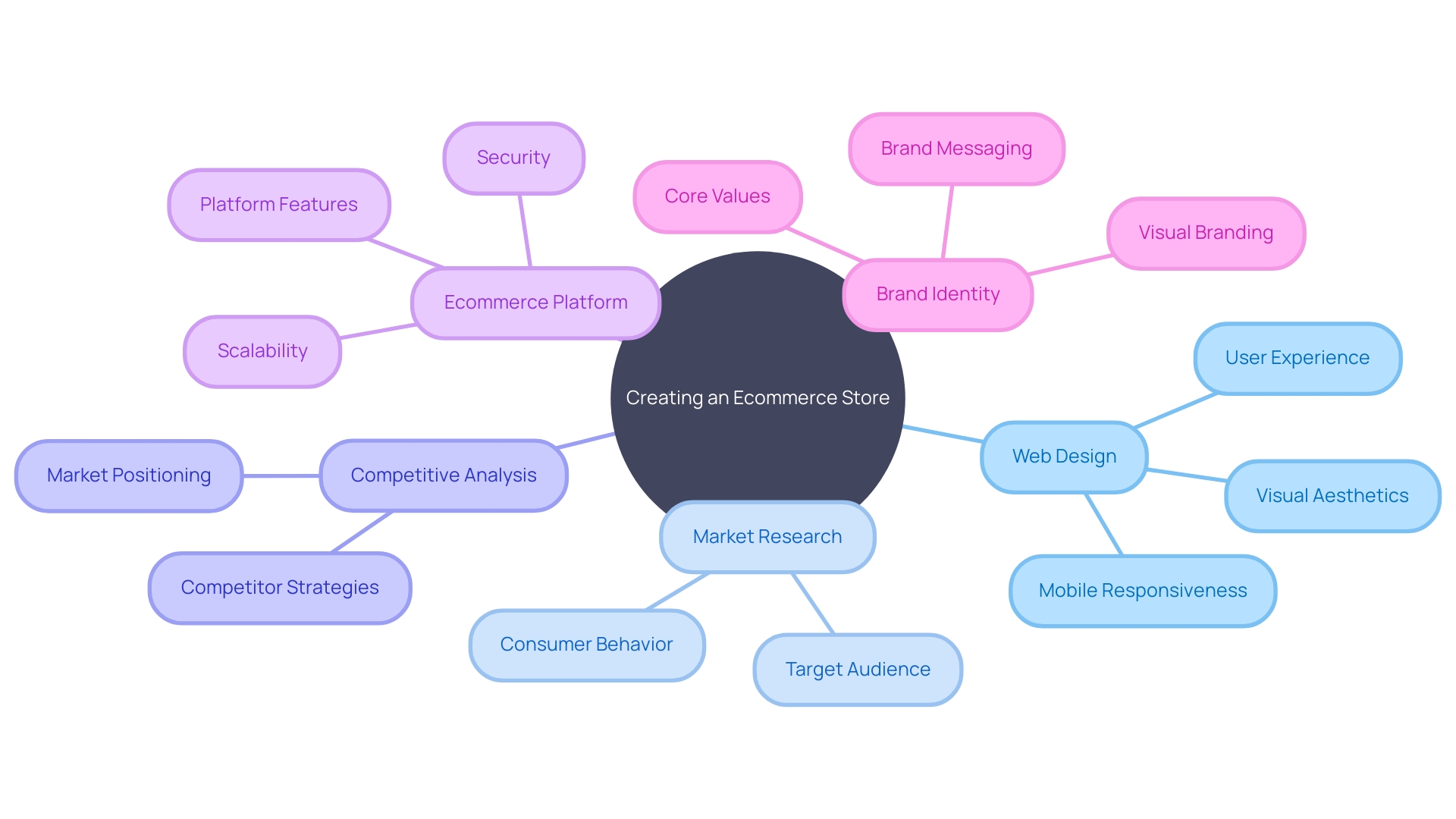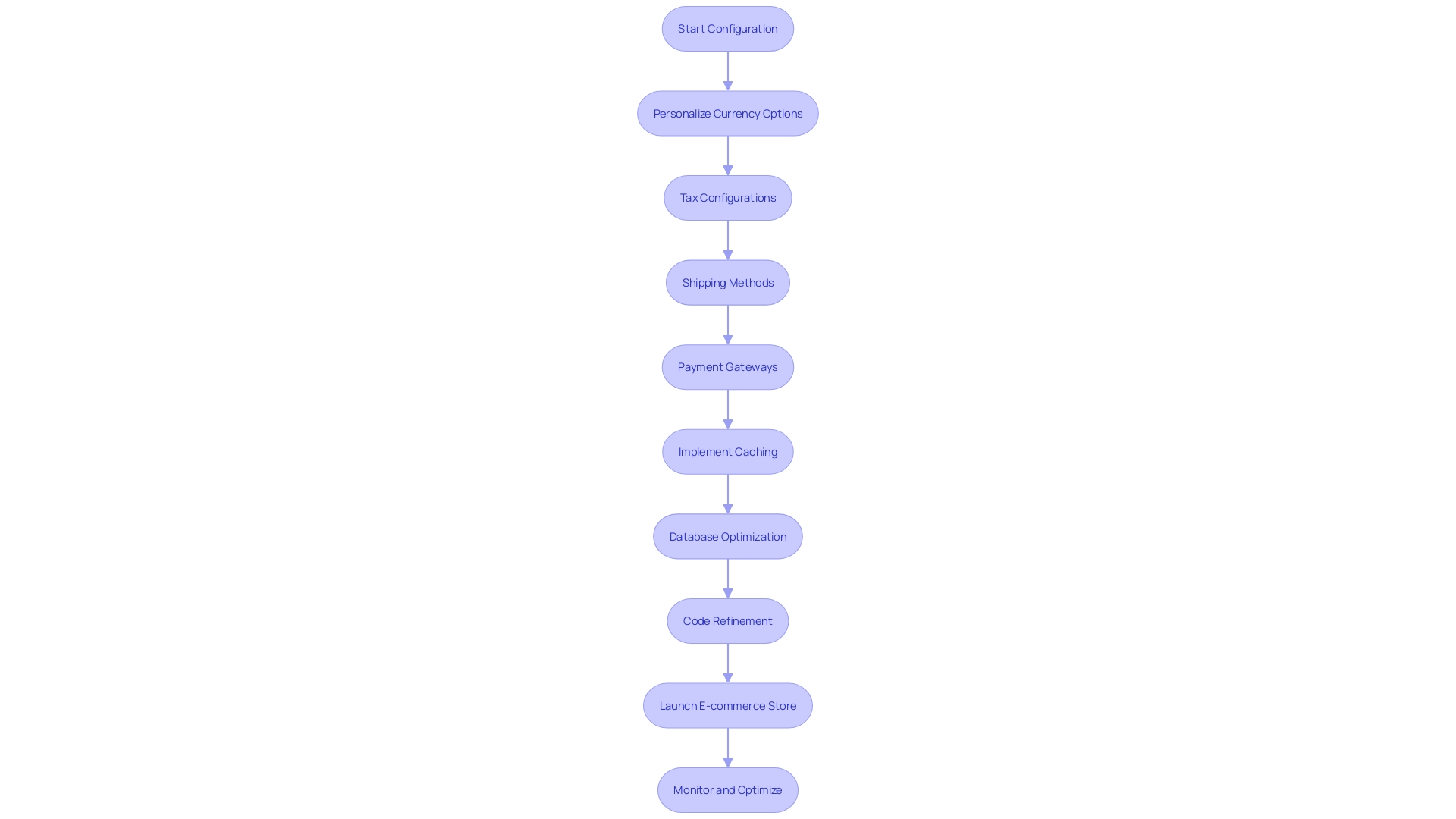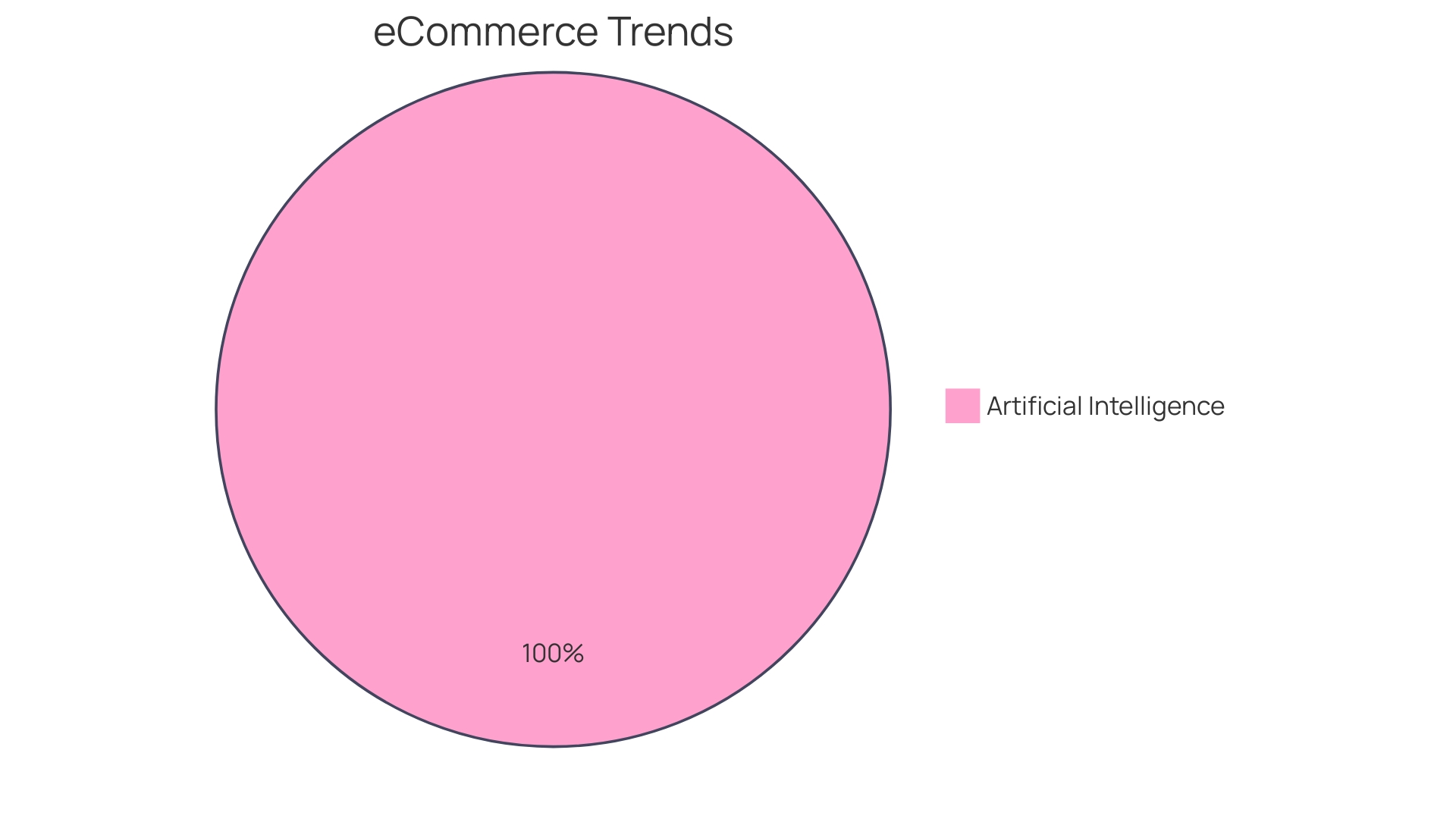Introduction
Selecting the ideal e-commerce platform for your website involves more than just cost considerations; it demands a strategic approach that aligns with your unique business goals. With platforms like AEM, Drupal, and WordPress, each brings its own set of features and capabilities to the table. For instance, WordPress stands out for its ease of use and user-friendly interface, making it an excellent choice for those with limited technical expertise.
On the other hand, Drupal offers a more robust solution with extensive customization options, suitable for complex sites that require a higher level of functionality.
When evaluating these platforms, it's crucial to delve into the scalability they offer—can they support your business as it grows? Also, consider the technical support and community backing each platform has; this can be invaluable for troubleshooting and optimizing your site's performance. Reflect on the insights provided by experts and industry news, such as the innovative checkout-free store technology in Dublin's airport, which underscores the importance of keeping abreast with the latest e-commerce advancements.
Moreover, it's essential to take into account market demand and competition. Analyze consumer interest trends and competitive strategies to ensure your chosen platform can cater to your market effectively. Whether it be Shopify's user-friendly features or Square's seamless integration with POS systems, your platform should empower you to create a compelling online presence that resonates with your audience.
Ultimately, the right e-commerce solution is one that not only meets your current needs but also positions you for future success in the ever-evolving digital marketplace.
Choosing the Right Ecommerce Platform
Choosing the perfect e-commerce solution for your website requires more than just financial factors; it requires a strategic method that is in line with your distinct objectives. With systems like AEM, Drupal, and WordPress, each brings its own set of features and capabilities to the table. For instance, WordPress stands out for its ease of use and user-friendly interface, making it an excellent choice for those with limited technical expertise. On the other hand, Drupal offers a more robust solution with extensive customization options, suitable for complex sites that require a higher level of functionality.
When assessing these systems, it's essential to explore the scalability they provide—can they accommodate your business as it expands? Also, take into account the technical support and community support each system has; this can be priceless for solving problems and enhancing your site's performance. Reflect on the insights provided by experts and industry news, such as the innovative checkout-free store technology in Dublin's airport, which underscores the importance of keeping abreast with the latest e-commerce advancements.
Moreover, it's essential to take into account market demand and competition. Analyze consumer interest trends and competitive strategies to ensure your selected system can cater to your market effectively. Whether it be Shopify's user-friendly features or Square's seamless integration with POS systems, your online presence should empower you to create a compelling online presence that resonates with your audience. Ultimately, the right e-commerce solution is one that not only meets your current needs but also positions you for future success in the ever-evolving digital marketplace.
Setting Up Your Ecommerce Store
Creating an ecommerce store on platforms like AEM, Drupal, or WordPress goes beyond technical configurations—it's about building a connection that resonates with your customers. Good web design is paramount, not only for aesthetics but also for creating trust and ensuring a seamless shopping experience. While setting up your store and entering your company information, it's important to consider the visual layout that will initially welcome your visitors. Market research and competitive analysis, including studying trends via tools like Google Trends and assessing competitors’ SEO strategies, can provide you with insights to distinguish your brand in the digital marketplace.
Furthermore, as the ecommerce landscape develops with new technologies and systems, comprehending the subtleties of each can make the distinction between a successful launch and a missed opportunity. As an illustration, enterprises that initiated using Square's point of sale system might discover its website functionalities less interconnected, emphasizing the significance of a framework that can grow and adjust according to your enterprise requirements. Hence, while choosing your ecommerce platform, take into account its seamless integration with your current systems and its ability to provide a versatile and user-friendly journey, encompassing product configuration until checkout. Remember, the name you select for your enterprise isn't merely a tag; it's a representation of your brand's identity and values.

Configuring General Settings
To achieve peak efficiency and provide an exceptional shopping experience, configuring your e-commerce store's general settings is a fundamental step. This process involves personalizing currency options, tax configurations, shipping methods, and payment gateways to align with your specific business needs and the preferences of your target audience. For example, utilizing a label system can empower separate teams to manage distinct segments of your catalog, ensuring that each group has access to the necessary tools and data. Implementing full-page caching, object caching, database optimization, and code refinement can also significantly reduce page generation times, which is crucial for handling large inventories and high volumes of transactions. Moreover, the introduction of structured stages such as Regulator, Staging, and Integration can streamline the content lifecycle, providing rigorous checks, testing, and seamless integration with front-end applications. These tailored settings and optimizations are intended to streamline operations and enhance satisfaction, ultimately fostering a smooth and enjoyable online shopping journey.

Adding Products to Your Store
Creating an engaging e-commerce platform on your website begins with the meticulous organization of your product inventory. By organizing your products into user-friendly categories and subcategories, individuals can easily navigate your offerings, reminiscent of the targeted approach Phil Kyprianou took with Gothrider Coffee. The brand's success is attributed to its distinct identity and strategic product bundling, which improved value perception.
Crafting detailed product descriptions plays a crucial role, much like the well-thought-out product files in WooCommerce, which integrate SEO-friendly keywords and high-quality multimedia. This not only helps improve the searchability of your products but also enhances the user interaction, potentially increasing sales conversions.
Moreover, setting the right pricing strategy is key, as indicated by the importance of a comprehensive product database. It should encompass essential details like price, discounts, and supplier information, ensuring a single source of truth for your products. This aligns with recent trends in e-commerce, where personalization and AI-driven tools like chatbots are leveraged to predict customer preferences and market trends.
Lastly, implementing a streamlined 'Add to Cart' feature is paramount. It's the cornerstone of the e-commerce transaction process, allowing users to select items for purchase effortlessly, as outlined in the practical guide using React for web development. With these strategic steps, your e-commerce site will not only facilitate a seamless shopping journey but also position itself for future enhancements in the rapidly evolving digital marketplace.
Customizing Your Store's Appearance
When designing your e-commerce website, one should prioritize not just aesthetics but also the overall coherence between design elements and brand identity, as well as functionality. Take inspiration from the film industry's portfolio website for Alexandra Murgu, where each design choice echoes her unique brand, balancing creative flair with systematic functionality. Likewise, your webshop should embody the core of your brand while guaranteeing a seamless user journey.
To stand out, embrace the latest design trends identified by agencies like Numiko, such as bold typography and nature-inspired themes, which steer away from minimalism. Remember, the goal is to harmonize visual appeal with performance, ensuring swift loading times that meet the expectations of today's users.
A mobile-optimized site is non-negotiable, given that over 50% of web traffic originates from mobile devices. Users show a clear preference for mobile sites that load quickly and perform efficiently, with faster sites enjoying a 15% higher conversion rate. A mobile-friendly design not only satisfies users but also increases the likelihood of repeat visits and conversions, an essential aspect considering the lower conversion rates typically seen on mobile.
Integrate personalization to enhance the shopping journey, such as appropriate filtering features and recommendations based on user location or past behavior. This approach resonates with clients and can lead to increased engagement and loyalty. Lastly, keep in mind that the user's interaction with your website can greatly impact how individuals perceive and trust your company, ultimately impacting its overall success.

Integrating Payment Gateways
Integrating a versatile and secure payment system is a linchpin for ecommerce success. An excellent demonstration of this is Stripe, a payment service provider (PSP) that has become a cornerstone for enterprises globally, providing a comprehensive suite of payment functions including billing, tax information management, and fraud analysis, all centralized around the customer experience. Similarly, YNAB's zero-based budgeting system exemplifies the importance of having a user-friendly platform that can manage diverse financial operations in a cohesive manner.
The evolution of payment gateways has been fueled by the modern consumer's demand for transactions that are not only swift but also secure and tailored to their needs. This demand has led to the rise of embedded financial services, which are increasingly being adopted due to their seamless integration into various models. These services are reshaping the way consumers and enterprises think about payments, as mentioned by FinTech industry writer Tom, who highlights the growing trend of convenience and the merging of financial services with technology.
In fact, according to the Global Payments Report 2023, the payment landscape is rapidly evolving with new real-time schemes and alternative payment methods. This complexity highlights the necessity for robust payment gateways that are capable of more than just authorizing transactions—they should also support a range of payment methods including credit cards, digital wallets, and even cryptocurrencies, as seen in the initiatives by Mercari and Rakuten Wallet. These companies have not only facilitated Bitcoin transactions but also aimed to educate consumers on the utility of cryptocurrencies, catering to a market where less than half of the users fully understand their Bitcoin usage.
For any ecommerce entity, choosing a PSP that aligns with these trends and offers a secure, customer-centric payment experience is essential. This ensures that the integration of the payment gateway into the ecommerce platform is not just seamless, but also positions the business at the forefront of payment innovation and security, ultimately fostering client trust and loyalty.
Integrating Shipping Options
To thrive in the e-commerce landscape, offering a variety of shipping options is not just beneficial, it's expected by consumers. It's essential to integrate with dependable carriers and offer a range of shipping solutions tailored to diverse preferences and requirements, such as weight, destination, and urgency. For example, while some clients might prioritize cost savings, choosing free standard shipping, others might require expedited services to guarantee a timely delivery. Catering to an international audience also means providing shipping solutions across borders. The secret to client contentment lies not just in the flexibility of options but also in transparency. Effective communication regarding shipping costs and delivery times is crucial, as it prevents unexpected charges at checkout, reducing cart abandonment rates and improving the experience for buyers. This method of shipping is backed by research that shows that brands are evaluated based on the quality of their delivery services, with expectations established at every stage of the delivery process. Therefore, guaranteeing a smooth and comforting shipping process is crucial in securing loyalty and trust.
Security Considerations for Ecommerce Integration
E-commerce website security goes beyond simply installing SSL certificates. It's about understanding the nuances of different SSL certificate types and selecting the right one that aligns with the security needs of your website. These certificates, issued by trusted Certificate Authorities (Cas), are integral to maintaining a secure and transparent online presence. However, the level of security and the type of certificate you choose will influence the cost and time involved in the acquisition process.
But securing your online storefront is not solely about SSL; it's also about staying current with the latest cybersecurity trends. As we step into 2024, retailers must prioritize cyber safety, making it an indispensable facet of their business strategy. With cyber threats becoming increasingly sophisticated, regular updates of your e-commerce system and associated software are crucial to patch vulnerabilities and safeguard customer data.
Moreover, the integration of robust authentication measures and educating your team on data handling best practices are vital components of a comprehensive security strategy. Articulating the importance of these measures, a 7-point security checklist highlights the significance of rigorous protocols in website management to protect against cyberattacks.
As technology evolves, so does the landscape of e-commerce threats. Google, for instance, has delineated its policies on malicious software, compromised sites, and unwanted software to offer clearer guidelines for online retailers. By comprehending and following these policies, retailers can guarantee their online systems do not become victims of these cyber risks.
In parallel with security, the functionality of e-commerce sites is equally important. Data integration tools emerge as a powerful tool to amalgamate data from disparate sources, ensuring consistency and accuracy. These platforms can result in a more holistic understanding of business performance and insights into clients, ultimately improving the e-commerce journey.
The checkout journey, particularly, highlights the need for a seamless integration of systems and processes. The phenomena of cart and checkout abandonment underscore the relationship between functionality and consumer behavior. By leveraging data insights and integrating efficient payment processes, retailers can address these issues, potentially improving conversion rates.
Retailers are also utilizing AI to enhance customer interactions, with customized shopping being a prime illustration of this integration in action. Such advancements underscore the significance of a unified approach to inventory management, which is now a fundamental expectation among consumers who seek a seamless omnichannel experience.
In conclusion, adopting a holistic approach that includes both security and functionality will not only safeguard your e-commerce system but also position it for success in the digital marketplace. By staying informed and implementing these expert insights, retailers can build resilient and customer-centric online stores.
Advanced Ecommerce Integrations (ERP, CRM, Inventory Management)
To fully utilize the capabilities of your ecommerce solution and ensure it can adapt to your expansion, contemplate integrating powerful systems such as ERP, CRM, and inventory management. These systems can transform your operations, enhancing satisfaction and boosting efficiency. For example, the integration of ERP systems can refine your financial, manufacturing, inventory, sales, and CRM processes, addressing inefficiencies and providing comprehensive reporting and analysis capabilities. As you embark on this journey, it's crucial to meticulously assess your existing operations, pinpointing areas for enhancement and ensuring that your chosen solutions align seamlessly with your platform, thus fortifying the foundation for a thriving ecommerce ecosystem.
When selecting integrations, draw inspiration from real-world success stories, such as the Travel Charme Strandhotel Bansin. This family-friendly hotel on Germany's picturesque Baltic coast utilized technology to streamline their operations, exemplifying the transformative impact of strategic software solutions. Additionally, stay abreast of innovations, like the checkout-free store in Dublin Airport powered by Zippin technology, which exemplifies the cutting-edge advancements in retail systems. Such examples underline the importance of agile, customer-centric solutions in today's digital landscape.
Ultimately, the goal is to select integrations that not only enhance your current operations but also anticipate future needs, ensuring a seamless experience for both your team and customers. With a thoughtful approach to ERP integration, you can unlock efficiencies across various domains, from accounting and budgeting to inventory management and logistics, propelling your ecommerce venture towards sustained success and growth.

Benefits of Ecommerce Integration
Ecommerce integration is revolutionizing the way businesses operate, offering a path to increased efficiency and a broader market reach. For instance, after implementing a customizable forecasting model, Filson was able to predict their e-commerce sales for the 2023 Holiday Season with stunning accuracy, forecasting one month's sales at 99.6% of the actual figures. Similarly, BigBasket's use of AI for inventory management showed the capability to handle a catalog of over 12,000 SKUs, adapting to new products at an impressive rate. Moreover, the collaboration between HUGO BOSS, Visa, and Adyen resulted in the development of a strong worldwide payment system, in line with their digital approach and improving the overall satisfaction of clients.
Moreover, advancements like the seamless omnichannel integration offered by applications like One Stock and Shopify are setting the stage for the future of retail, with features like real-time synchronization and intelligent order allocation. The utilization of Application Programming Interfaces (APIs) is also an essential element in constructing an enhanced client journey, as they enable for streamlined data integration across diverse systems, resulting in enhanced transaction management and client monitoring.
The landscape of e-commerce is dynamic, with artificial intelligence (AI) leading the charge in providing personalized experiences to customers. As the industry continues to grow, encompassing various markets from beverages to household essentials, retailers are urged to adopt strategies that go beyond keyword focus to provide informative content that addresses consumer queries early in the buying journey. With these mergers and enhancements, companies can anticipate not only an increase in sales but also in the expandability and complexity of their online shopping systems.
Common Ecommerce Integration Tools and Platforms
Choosing the ideal ecommerce solution is not only about checking off features on a list; it's about adopting a system that aligns with your business's distinct objectives and customer-focused strategies. Platforms such as Shopify, WooCommerce, Magento, and Bigcommerce are well-recognized for their robust feature sets and integration capabilities, but the decision-making process should extend beyond general functionalities. For instance, the collaboration between Lily AI and Shopify showcases the importance of personalization through customer-centric product attributes, which can significantly influence purchasing decisions by resonating with consumers' specific interests and preferences. Similarly, the success of brands like Gothrider Coffee illustrates the power of distinctive branding and product bundling strategies, which can be effectively supported by a flexible and scalable ecommerce solution. As we observe inventive models like checkout-free stores emerging, it's evident that the future of ecommerce lies in systems that can adjust to evolving retail landscapes and consumer demands. Therefore, when evaluating ecommerce tools, consider a future-proof solution that offers a seamless digital experience across all touchpoints, ensuring a cohesive journey for the connected customer. With the proliferation of ecommerce across diverse industries, from beverage sales to household essentials, the right platform should empower your business to captivate a global audience, streamline operations, and foster growth in the ever-expanding digital marketplace.
Conclusion
To select the ideal e-commerce platform, consider WordPress for its user-friendly interface or Drupal for extensive customization options. Evaluate scalability, technical support, and community backing. Analyze market demand and competition to choose a platform that caters to your market effectively.
Customize your store's appearance, optimize general settings, and streamline the shopping journey.
Integrate versatile and secure payment gateways like Stripe. Offer various shipping options and ensure transparent communication. Prioritize e-commerce website security and stay updated with cybersecurity trends.
Integrate ERP, CRM, and inventory management systems for enhanced operations. Choose a platform that aligns with your business goals and offers a seamless digital experience.
By following these expert insights, you can build a resilient and customer-centric online store that positions your business for success in the digital marketplace.
Build a resilient and customer-centric online store with our expertise!





